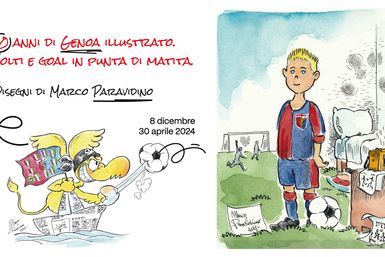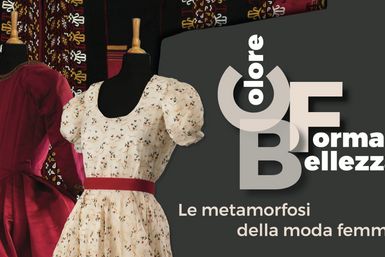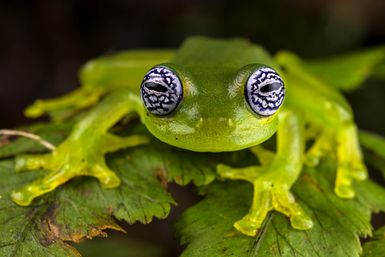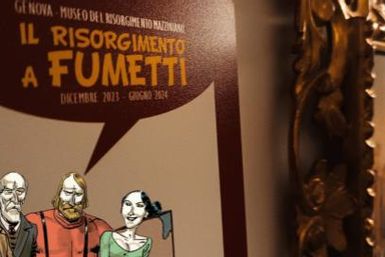The show
Curated by Matteo Fochessati and Gianni Franzone
Palazzo Reale, in the Teatro del Falcone , opens to the public from 19 April to 8 September 2019, a major exhibition organized in collaboration with the Wolfsoniana - Palazzo Ducale Foundation for Culture and dedicated to the work of the Genoese artist Antonio Giuseppe Santagata (Genoa , 10 November 1888 - 13 September 1985), inspired by his direct participation in the war conflict. With respect to the theme of war , the aspect that the curators have chosen to celebrate - and around which the exhibition event is built - is that of memory since the memory of that terrible conflict, even today, mixes feelings of dismay and marked accents. rhetorical, very persistent in a certain war and patriotic imagery.
The re-enactment and the echo of the conflict in the years between the two wars were on the other hand marked by ideological characteristics that arose from the propaganda action of the fascist regime and which contributed, in a decisive way, to the formation of an aesthetic of politics that found the its most natural linguistic expression in the figurative culture of the Italian twentieth century. The resumption, in this field of research, of ancient painting techniques and the close dialogue established between artists and architects represented one of the most significant moments of this trend which, beyond its ideological compromises, was central in the national artistic panorama of that period.
It is no coincidence that the exhibition itinerary will be built around the substantial nucleus of Santagata cartoons lent by a precious private house and referring to his main mural painting interventions, from the frescoes for the assembly hall of the Mother House of the Mutilated in Rome (1928) to those for the courtyard of the Victories (1936) in the same building designed by Marcello Piacentini, from the stained glass window and the fresco for the Casa dei Mutilati in Genoa (1938-1939) to the large fresco Heroic life by Antonio Locatelli for the Casa Littoria in Bergamo ( 1940). Together with these large cartoons, works from the Wolfsoniana - Palazzo Ducale Foundation for Culture, from the Museum of the Risorgimento in Genoa and from various private collections will be exhibited.
The choice to look at the representation of the war proposed by Santagata can offer a precise and documented narration of the main historical and military events of the Italian army, but also a sincere testimony, less rhetorical and more human, on the daily life of the infantry at the front. . Thanks to his friendship with Carlo Delcroix, president since 1924 of the National Association of the Mutilated and Disabled of War, Santagata, author of the pictorial cycles for the Mother House of the Mutilated of War in Rome, was also involved in the decoration of the main Houses of the Mutilated, built in those years throughout the peninsula, and thus became one of the main protagonists of the great mural season, which marked the Italian artistic research between the two wars.
Focused on the main events of Italian participation in the Great War and on the heroic sacrifices endured by the soldiers along the bloody path to victory, the great mural and decorative cycles of Santagata, despite some more allegorical representations - as in the case of the depiction of the stained glass window on the main facade of the Casa del Mutilato in Genoa - testify to the artist's profound participation in the subject matter and document, almost directly, daily life and the most common episodes of trench warfare. For these reasons, the exhibition La memoria della guerra , focused on Santagata 's artistic production, but integrated with some cartoons and sketches by other Italian artists active in the same field, can offer food for thought and interest for a wide audience. In particular, the exhibition will be accompanied by events and in-depth meetings on the topics addressed within the exhibition and by educational programs for schools, dedicated not only to the history of the Great War, but also to an investigation into the ancient techniques taken from the Italian artists on the occasion of the decorative cycles of the twentieth century.
To enhance the original approach of the exhibition and strengthen its didactic value, a section is planned to be dedicated to the Houses of the Mutilated, as an architectural typology present only in the Italian context, unlike the many commemorative monuments, ossuaries and shrines scattered throughout the rest of the city. Europe. The buildings in which Santagata worked will obviously be highlighted: in addition to the aforementioned Casa Madre in Rome and Casa del Mutilato in Genoa, also those in Palermo, Ravenna, Milan, but also in Padua, Florence and Bologna.
A panorama of extreme linguistic variety emerges, in which models with a clear rationalist approach - such as, for example, Giuseppe Spatrisano's project for Palermo - are flanked by more traditional ones, often created by transforming existing buildings to house the offices of the association. founded by Carlo Delcroix. Not least the purpose of the section will also be to invite the public to reflect on the conservation and reuse of these architectural artefacts, when, for obvious reasons, the number of members of the National Association of Mutilated and Invalids of War is always decreasing. more and the reasons why such buildings were built are lacking.







